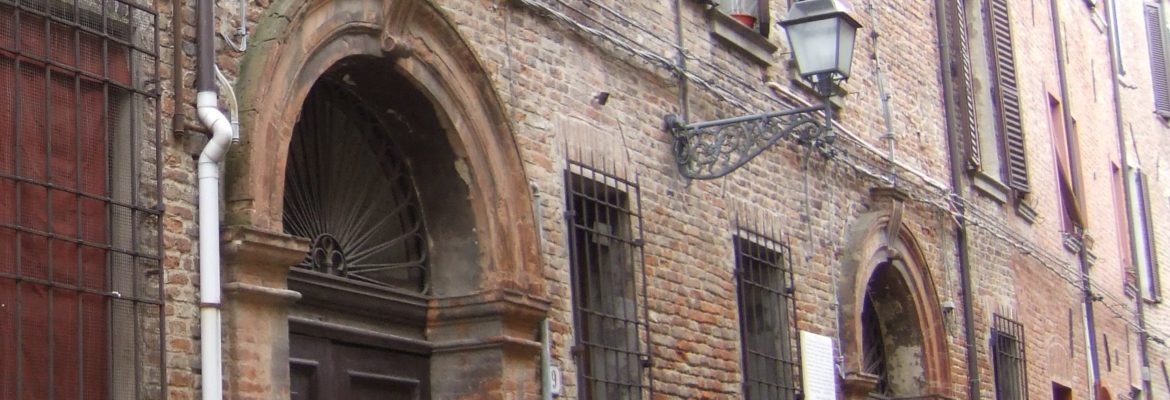A plaque at n° 41 Via Vittoria commemorates the Jews who were expelled from Spain and Portugal in the late 15th century, then taken in by Duke Ercole I Este, who saw them as a resource for his capital city. The exiled were deeply rooted in their cultural heritage, and immediately established their own independent prayer hall and built a cemetery. The synagogue remained open until the Second World War, and was closed after the Nazi-Fascists raided it. It was on the first floor of the building, and has the traditional two-sided layout with the tevah opposite each other on the shorter sides, and public seating facing the central aisle. After the war, the Baroque furnishing was partly salvaged and relocated elsewhere. The tevah and the central polychrome marble section of the aron were transferred to the winter prayer hall of the Jewish community in Livorno/Leghorn, named after the Ferrara-born Rabbi Isacco Lampronti, who had commissioned the ark in 1710. The sides of the aron, made in wood and green lacquer are in the hall of the former Italian Temple. In the 1950s the synagogue was converted for residential use.
This synagogue was the hub of an extremely cultured Sephardic community that had had many prominent figures from the 16th century onwards including Abraham Usque, who was a famous printer and published the “Ferrara Bible”, (1553), a Judeo-Spanish translation of the Bible; his sons were Samuel and Salomon, the latter remembered for his Spanish translation of Petrarch. There was a circle of Jewish and Christian intellectuals, led by Samuel Abravanel (1473-1547) and Dona Grazia Mendes (1510-1569), who greatly helped the conversos (Spanish Jews who had converted to Catholicism) return to their roots and Amato Lusitano (1511-1568), essayist and lecturer at the faculty of medicine.
Via Vittoria, 41

